After careful consideration I have decided to transfer all hardware review activities to a new domain. I purchased Hardwareasylum.com in 2012 and have been working hard to build a new and improved Ninjalane on that domain. If you are reading this you have reached one of the archived articles, news, projects and/or reviews that were left behind during the site migration.
Please update your bookmarks and be sure to visit the new and improved Ninjalane at Hardwareasylum.com
DFI LanParty KT400A Motherboard Review
Author: Dennis Garcia
Published: Tuesday, June 03, 2003
Benchmarks - Synthetic
The system as it was tested
DFI LanParty KT400A
AMD Athlon XP2200+ Tbred processor
CoolerMaster Aero 7+ Heatsink
2x Corsair XMS3502 v1.1 DDR434 256megs
ATI Radeon 9700 Pro
Western Digital Caviar SE 80GB ATA/100 HDD
Enermax 350watt power supply
12x/40x DVD/CDRom
Windows XP Professional Service Pack 1
AMD Athlon XP2200+ Tbred processor
CoolerMaster Aero 7+ Heatsink
2x Corsair XMS3502 v1.1 DDR434 256megs
ATI Radeon 9700 Pro
Western Digital Caviar SE 80GB ATA/100 HDD
Enermax 350watt power supply
12x/40x DVD/CDRom
Windows XP Professional Service Pack 1
Reference System
Soltek SL-75FRN-L Motherboard
AMD Athlon XP2200+ Tbred processor
CoolerMaster xDream Heatsink
2x256megs Corsair Platinum TwinX paired memory
ATI Radeon 9700 Pro
Western Digital Caviar SE 80GB ATA/100 HDD
Enermax 350watt power supply
12x/40x DVD/CDRom
Windows XP Professional Service Pack 1
AMD Athlon XP2200+ Tbred processor
CoolerMaster xDream Heatsink
2x256megs Corsair Platinum TwinX paired memory
ATI Radeon 9700 Pro
Western Digital Caviar SE 80GB ATA/100 HDD
Enermax 350watt power supply
12x/40x DVD/CDRom
Windows XP Professional Service Pack 1
Wcpuid
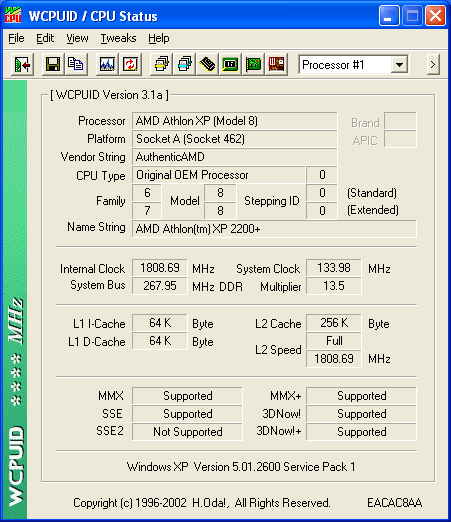
SiSoft Sandra
Sandra is a software collection of synthetic benchmarks
that will give us a basic idea as to what a system is capable of. It should be noted that SiSoft numbers change depending on what version you have installed, these where
recorded using Sandra Professional Version 2003.3.9.44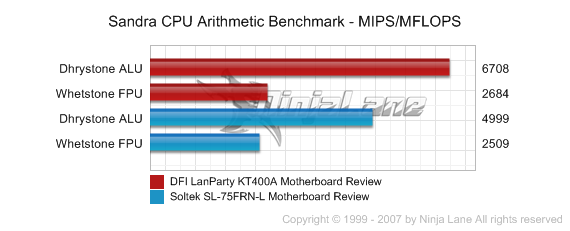

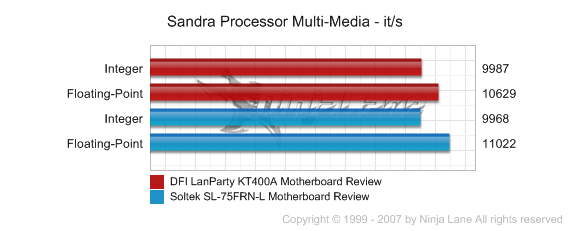
You will notice that Dual Channel memory controllers will post similar Integer and Floating Point scores in Sandra where as Single Channel controllers will lack in Floating point.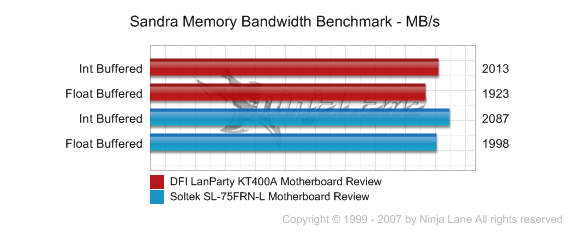

Cachemem
Cachemem is a synthetic benchmark used to test bandwidth and latency.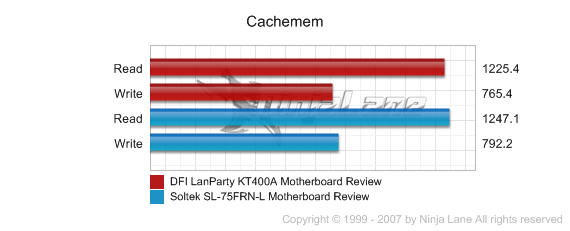

As expected both the LanParty and the reference system are sporting similar numbers across the board. Many of the deviations shown can be linked to the differences in the memory used for these tests.

